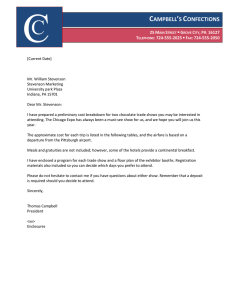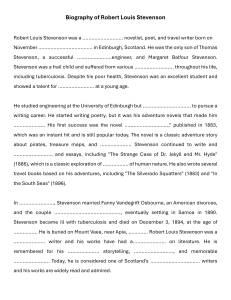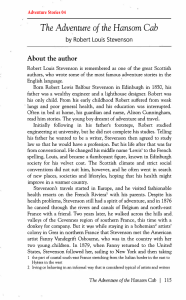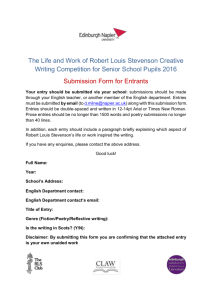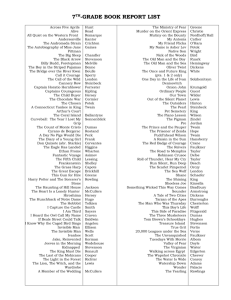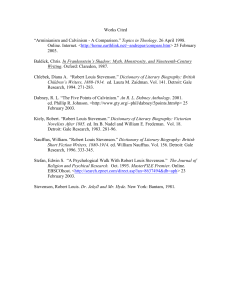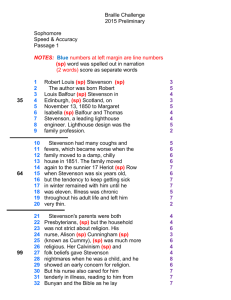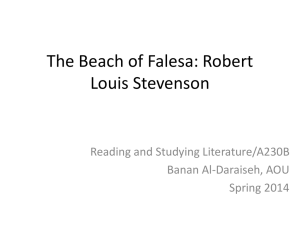Location of a Stevenson Screen
advertisement
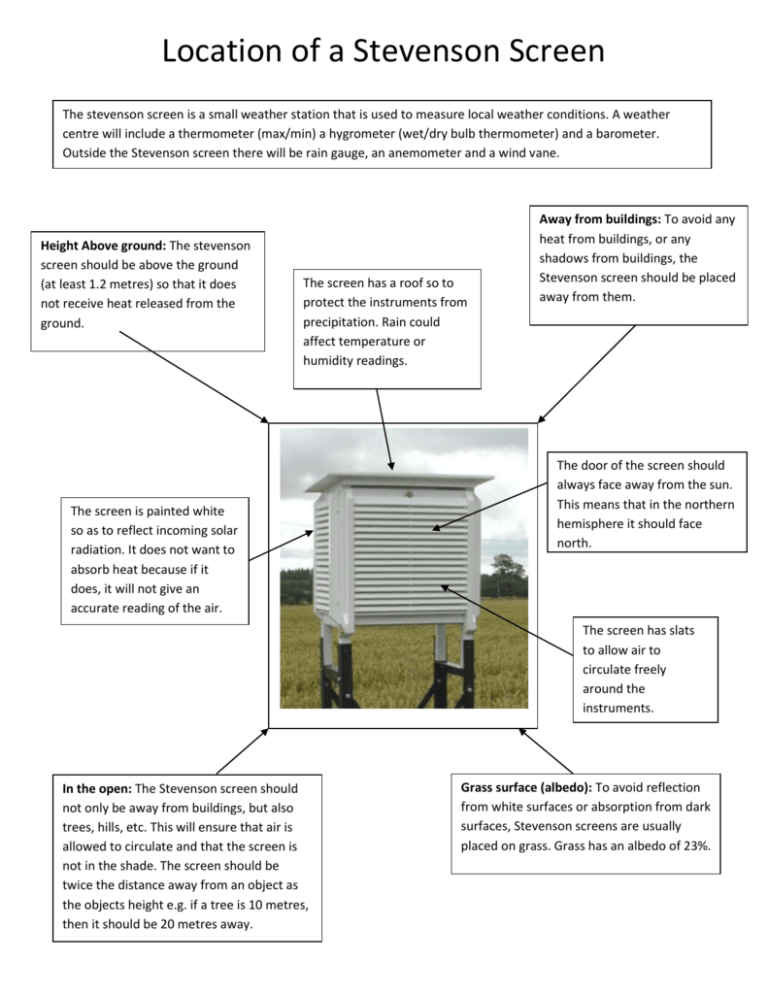
Location of a Stevenson Screen The stevenson screen is a small weather station that is used to measure local weather conditions. A weather centre will include a thermometer (max/min) a hygrometer (wet/dry bulb thermometer) and a barometer. Outside the Stevenson screen there will be rain gauge, an anemometer and a wind vane. Height Above ground: The stevenson screen should be above the ground (at least 1.2 metres) so that it does not receive heat released from the ground. The screen has a roof so to protect the instruments from precipitation. Rain could affect temperature or humidity readings. The screen is painted white so as to reflect incoming solar radiation. It does not want to absorb heat because if it does, it will not give an accurate reading of the air. Away from buildings: To avoid any heat from buildings, or any shadows from buildings, the Stevenson screen should be placed away from them. The door of the screen should always face away from the sun. This means that in the northern hemisphere it should face north. The screen has slats to allow air to circulate freely around the instruments. In the open: The Stevenson screen should not only be away from buildings, but also trees, hills, etc. This will ensure that air is allowed to circulate and that the screen is not in the shade. The screen should be twice the distance away from an object as the objects height e.g. if a tree is 10 metres, then it should be 20 metres away. Grass surface (albedo): To avoid reflection from white surfaces or absorption from dark surfaces, Stevenson screens are usually placed on grass. Grass has an albedo of 23%.
